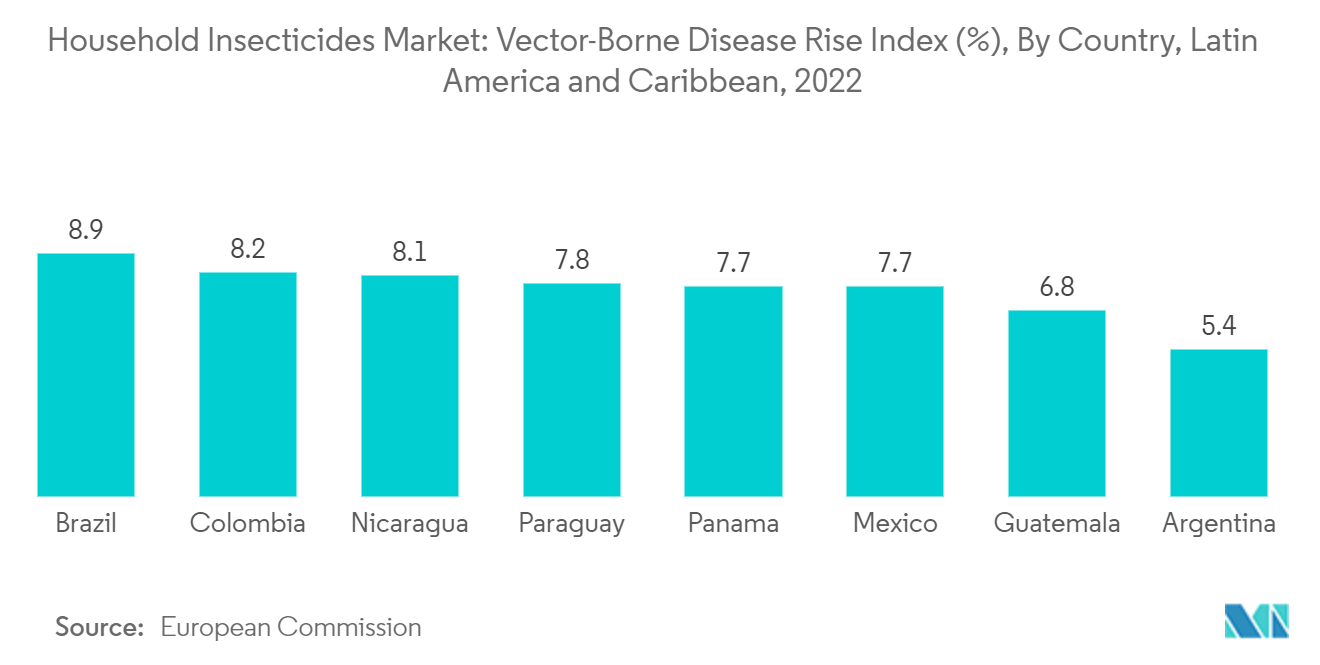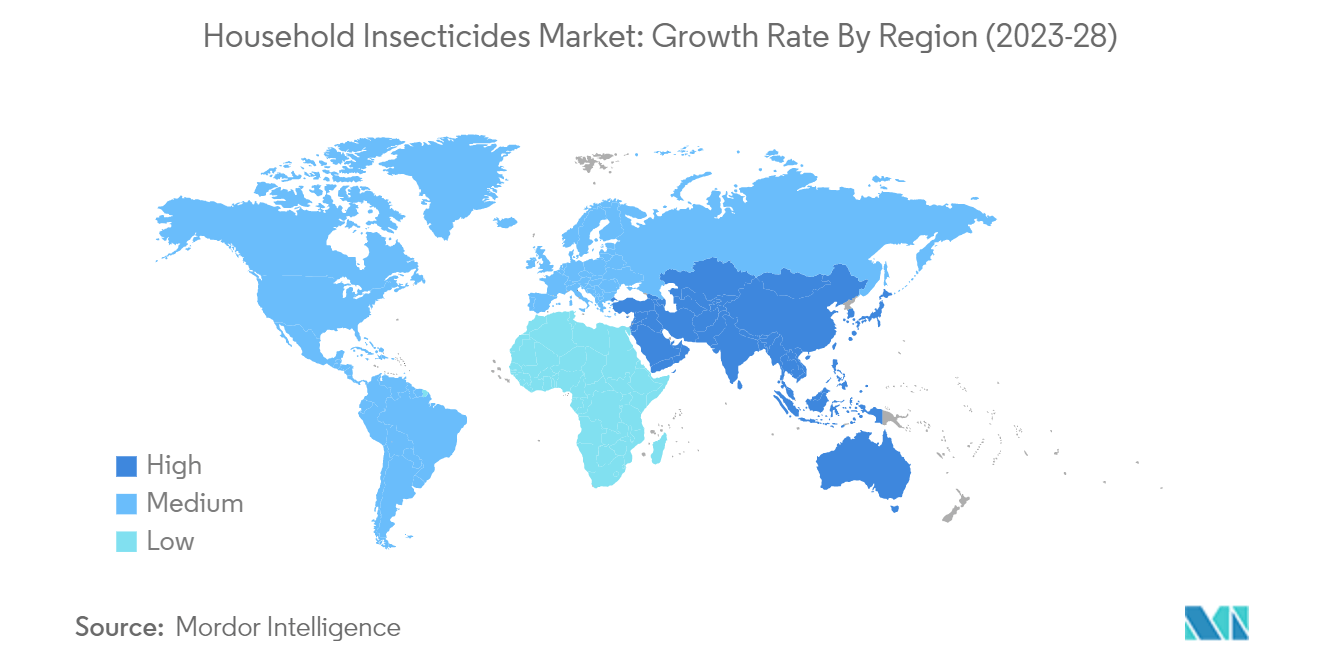Market Trends of Household Insecticides Industry
Rising Prevalence of Insect-borne Diseases
- Insects, particularly mosquitoes and ticks, are responsible for the transmission of many diseases, such as malaria, dengue fever, Zika virus, Lyme disease, and West Nile virus, among others. There are several reasons for the rising prevalence of insect-borne diseases, including climate change, urbanization, and increased global travel.
- The global urban population is becoming more health-conscious, and people are becoming more aware of the risks of mosquito bites. Furthermore, as the number of diseases caused by mosquitoes increases in developing countries, the rural population is becoming increasingly concerned about health and hygiene.
- Additionally, the increase in air conditioning units and other appliances that hold water can provide breeding sites for mosquitoes.
- Climate change is one of the primary reasons for the increased prevalence of insect-borne diseases. As global temperatures rise, the geographic range of many insect vectors expands. For instance, the Asian tiger mosquito, a vector for dengue and Zika viruses, has spread to new parts of Europe and the Americas due to warming temperatures. Therefore, the rising prevalence of insect-borne diseases is a complex issue caused by a combination of factors.

Asia Pacific Dominates the Market
- The Asia-Pacific region is experiencing rapid urbanization and an increasing population, which has resulted in a rise in demand for household insecticides. With more people living in close proximity to each other, the chances of insect infestations and the spread of diseases increase. Additionally, the rising disposable incomes of people in this region have led to increased spending on household products, including insecticides.
- Vector-borne diseases like dengue fever are also a major concern in the Asia-Pacific region. Dengue fever is a mosquito-borne viral disease that has become a significant public health concern in many countries in this region. The rising incidence of dengue fever and other vector-borne diseases has led to increased awareness about the importance of keeping households insect-free. This has driven the demand for household insecticides in the region.
- Governments in the Asia-Pacific region have also taken steps to address the problem of vector-borne diseases. They have implemented awareness campaigns to educate people about the importance of keeping their homes insect-free and have also introduced regulations to ensure insecticides are used safely and effectively. Overall, the growth of the household insecticides market in the Asia-Pacific region is driven by a combination of factors, including population growth, urbanization, rising disposable incomes, and concerns over vector-borne diseases. The market is expected to continue to grow in the forecast period.


